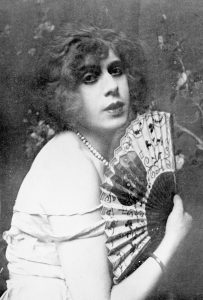Happy Transgender Awareness Week! That start alone will have been enough to deter some people from reading on. They’ll think ‘typical lefty snowflake student’ and ‘transgenderism doesn’t even exist’. Now the first half of that is almost certainly true, but the second half is factually and historically inaccurate.

Image found at Plex.page (creator: Ted Eytan)
Before I start this article, I want to make clear that this is by no means a definitive history of transgenderism and genderfluidity. As much as I wish I had the space to write about this at length, I do not, especially given there is a rich transgender culture throughout time which has been widely ignored; history is written by the winners, and unfortunately transgender people are on the long list of minority groups that have not been given the time or space in modern media to grow or speak their truth.
Transgenderism and gender non-conformity has, throughout time, taken on many different guises and forms. Examples of this include androgynous Ancient Egyptian gods, male Japanese actors during the Edo period playing female characters or Native American tribes having ‘third-gender’ roles, most notably Navajo nádleehi or Zuni lhamana. Transgenderism alongside other forms of gender non-conformity has a long past and can be found not only dotted through time but dotted across the globe.
Across Europe there are examples of transgenderism to be found, starting at the Vikings, passing through early modern Europe before continuing to the present day. Norse mythology, similar to that of Ancient Egypt, saw Loki and Odin have distinctly genderfluid roles; Odin was proficient in the apparently effeminate seiðr magic, and different stories portray both Loki and Odin as women. Dramatisations of Viking life on TV and film presents distinct gender norms, with men being muscular and full of bravado, but real Viking conceptions of gender was not as set in stone as this would suggest.

Antonio de Erauso. Image found at Wikimedia Commons
Early modern Western Europe, including but not exclusive to France and Spain, saw people write about overtly gender non-conforming themes. A 1322 French poem by Kalonymus ben Kalonymus contained evidently gender dysphoric feelings; he laments at being created a man and wishes to be female. There are several examples of 16th Century Spanish girls growing up and taking on male identities, for example Antonio de Erauso née Catalina, who went on to fight a a mercenary in the Arauco War (1536-1810) in modern day Chile. Gender non-conformity was therefore prevalent in Europe, but this is not to say that it was not also ubiquitous in other parts of the world
During the recent BLM protests, there was much discussion about ‘Black Trans Lives’, something which confused the media and was wrongly covered as an attempt to take the spotlight away from the real issue: systemic racial violence. Transgender people of all races and ethnicities face a dangerous world in which physical and verbal assault are commonplace, but when we add racial prejudice to that mix it becomes a world so hostile that it really shows the strength Black transgender people possess.
Historically, the pride and strength of black transgender figures is unsurprising. Many black communities have traditionally flirted with the boundaries of male and female. African tribes, such as the Igbo in modern-day Nigeria or the Fon in Benin had female citizens who took on male roles, even marrying women. Colonial powers enforced their own idea of gender binaries and norms throughout the 20th Century which widely put an end to the genderfluidity and freedom which had become commonplace on the African continent. Nonetheless, there is undoubtedly a transgender heritage across Africa, and in Caribbean communities like Haiti, which has been widely ignored in western education.
The major change across time, as referenced above, has been the entrenching of gender norms and the subsequent ‘othering’ of those who do not conform. Edward Said’s famous discussion of Orientalism, the creating of an orthodoxy as to alienate those who do not conform, was primarily aimed at the discussion of ethnicity and religion but can equally be discussed in relation to transgenderism. For all of the 20th Century, and to be honest most of the 21st Century to date, transgender people have been disregarded and deliberately misunderstood to the point where they have become an easy target for abuse.

Lili Elbe. Image found at Wikimedia Commons
What the above shows is that the history of transgenderism is significantly broader than the individual examples that have been used to show how far we have supposedly come regarding transgender rights; Eddie Redmayne’s portrayal of Lili Elbe in The Danish Girl received widespread acclaim but is tokenistic in its existence as a film that celebrates transgenderism and gender non-conformity.
More than that, however, it shows that there is no logical reason for transphobia. History is often used as a tool to try and support hatred and prejudice, even though those who try to use historical arguments clearly have little to no grasp of the past. I’m sure that the bigots who long for the good old days before political correctness and liberal democracy would be horrified to learn that we live in a more hostile environment today than at any other time in history, up to the beginning of the 19th-Century anyway.
Hopefully this prompts some of you to research further and to continue the cause for true equality between cis- and transgender people. To paraphrase Marsha P. Johnson, drag-queen and LGBT activist, we are all brothers and sisters and human beings in the human race.
Let’s act like it.
Image: Education Post (photo by Ted Eytan)